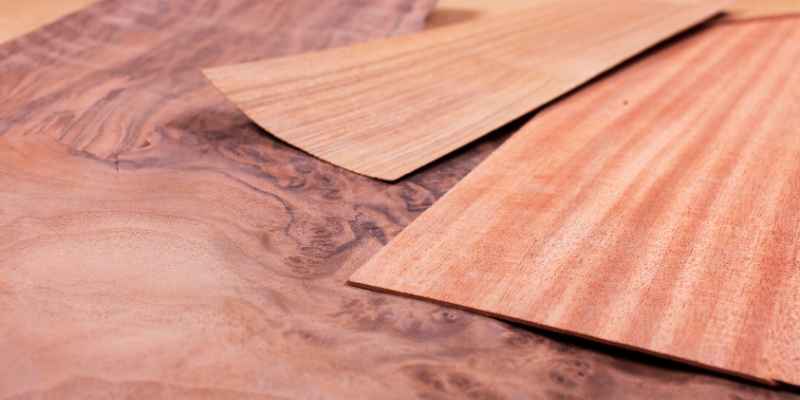Yes, you can use Citristrip on veneer. Citristrip is a gentle and effective paint stripper that can safely remove paint and varnish from veneer surfaces without damaging the wood.
It is a popular choice for DIY projects and furniture restoration. Veneer, which is a thin layer of wood applied to a surface, can be delicate and prone to damage, so it is important to use a gentle and non-abrasive product like Citristrip.
By following the instructions carefully and taking necessary precautions, you can successfully strip the paint or varnish from your veneer furniture or surfaces using Citristrip.
Introduction To Citristrip And Veneer
Citristrip is a popular paint and varnish remover, but using it on veneer requires caution. The gentle formula of Citristrip is suitable for veneer, but it’s essential to test it on a small, inconspicuous area first to ensure it won’t damage the delicate surface.
If you are planning to refinish a wooden piece of furniture, you might come across the term “veneer.” Veneer is a thin layer of wood that is glued onto a substrate. It is commonly used to give furniture a more expensive look or to cover up imperfections. However, refinishing veneer can be a bit tricky, as sanding it down can damage the thin layer of wood. This is where Citristrip comes in.
The Basics Of Citristrip
Citristrip is a brand of paint stripper that is known for being eco-friendly and having a pleasant citrus scent. Unlike traditional paint strippers, Citristrip does not contain harsh chemicals such as methylene chloride or NMP. Instead, it uses a blend of natural ingredients such as citrus terpenes and soybean oil to break down paint and varnish.
Veneer Types And Characteristics
Veneer comes in a variety of types and characteristics. Some common types of veneer include:
- Flat cut veneer – cut from a log with a blade parallel to the growth rings
- Quarter cut veneer – cut at a 90-degree angle to the growth rings
- Rift cut veneer – cut at a slight angle to the growth rings
When it comes to refinishing veneer, it is important to consider its characteristics. Veneer is a thin layer of wood, so sanding it down can cause damage. Additionally, some veneers are more delicate than others and may require special care when refinishing.
In conclusion, Citristrip can be used on veneer, but it is important to be cautious when refinishing. Understanding the basics of Citristrip and veneer types and characteristics can help you achieve a successful refinishing project.
Compatibility Concerns
If you are looking for a way to remove paint or varnish from a veneer surface, you may have heard about Citristrip. This popular paint stripper is known for being gentle and effective, but before you apply it to your veneer, you need to consider compatibility concerns.
Chemical Composition Of Citristrip
Citristrip is a solvent-based paint stripper that is made with a blend of ingredients, including N-Methyl-2-pyrrolidone (NMP) and citrus terpenes. These chemicals work together to break down the chemical bonds that hold paint and varnish to surfaces.
- N-Methyl-2-pyrrolidone (NMP) is a powerful solvent that is commonly used in paint strippers. It is effective at breaking down paint and varnish, but it can also be harsh on some surfaces.
- Citrus terpenes are natural solvents that are derived from citrus peels. They are less harsh than NMP and are often used as a more eco-friendly alternative.
Veneer Sensitivity To Chemicals
Veneer is a thin layer of wood that is applied to a substrate, such as MDF or particleboard. It is known for its beauty and durability, but it can also be sensitive to chemicals. Some types of veneer are more sensitive than others, and exposure to harsh chemicals can cause damage.
Before you use Citristrip on veneer, it is important to consider the type of veneer you are working with. If you are unsure, it is best to test a small, inconspicuous area before applying Citristrip to the entire surface.
While Citristrip can be an effective paint stripper for many surfaces, including veneer, it is important to consider compatibility concerns before using it. By understanding the chemical composition of Citristrip and the sensitivity of veneer to chemicals, you can make an informed decision about whether or not it is the right choice for your project.
Preparation For Application
Before using Citristrip on veneer, it is crucial to properly prepare the surface for application. This ensures the best results and minimizes any potential damage to the veneer. There are a few key steps to follow in the preparation process.
Safety Precautions
When working with any chemical stripper, including Citristrip, it is important to prioritize safety. Protect yourself by following these safety precautions:
- Wear protective gloves, safety goggles, and a respirator mask to shield yourself from any potential skin, eye, or respiratory irritation.
- Work in a well-ventilated area or use a fan to circulate fresh air.
- Avoid smoking or open flames in the vicinity, as Citristrip is flammable.
- Keep the product away from children and pets.
Surface Readiness
Before applying Citristrip to the veneer, ensure that the surface is ready for the stripping process. Follow these steps to prepare the veneer:
- Remove any loose or flaking veneer using a scraper or putty knife. This will prevent the Citristrip from getting trapped beneath the damaged veneer.
- Ensure the veneer is clean and free from dirt, dust, or any other contaminants. Wipe the surface with a soft cloth or use a gentle cleaning solution if necessary.
- Test Citristrip on a small, inconspicuous area of the veneer to ensure compatibility and to determine the appropriate application time. This step is especially crucial for delicate or sensitive veneer surfaces.
- If the veneer has been previously finished with a sealant or varnish, lightly sand the surface to create a better bond between the Citristrip and the veneer.
By following these preparation steps, you can confidently proceed with applying Citristrip to the veneer, knowing that you have taken the necessary precautions and prepared the surface properly for the stripping process.
Application Techniques

When applying Citristrip on veneer, it’s crucial to use the right techniques to achieve the best results. Proper application techniques ensure that the veneer is effectively stripped without causing damage. Here’s a step-by-step guide and common mistakes to avoid when using Citristrip on veneer.
Step-by-step Guide
- Prepare the work area by laying down a drop cloth to protect the surrounding surfaces.
- Apply a thick, even layer of Citristrip to the veneer using a brush or roller.
- Allow the Citristrip to sit on the veneer for the recommended time specified on the product label.
- Use a stripping tool to gently scrape away the softened finish and old paint from the veneer surface.
- Wipe off any remaining residue with a clean, damp cloth.
- Allow the stripped veneer to dry completely before applying a new finish or paint.
Common Mistakes To Avoid
- Not applying enough Citristrip: Ensure the veneer is generously covered to effectively soften the old finish.
- Leaving Citristrip for too long: Adhering to the recommended time prevents damage to the veneer.
- Using excessive force when scraping: Gentle scraping prevents potential damage to the veneer.
- Not thoroughly wiping off residue: Proper cleaning ensures the surface is ready for a new finish.
Timing And Duration
When using Citristrip on veneer, timing and duration are essential factors to consider for a successful outcome. Understanding the optimal application time and knowing when to remove Citristrip is crucial to achieve the best results while protecting the integrity of the veneer surface.
Optimal Application Time
The optimal application time for using Citristrip on veneer is between 30 minutes and 24 hours. This range allows the stripping agent to effectively penetrate the layers of finish while minimizing the risk of damaging the delicate veneer underneath. It’s important to monitor the progress during this period to ensure that the Citristrip is not left on for longer than necessary.
When To Remove Citristrip
Once the Citristrip has been applied for the recommended duration, it is crucial to remove it promptly. Leaving the stripping agent on for too long can lead to overexposure, potentially causing damage to the veneer. As soon as the finish begins to lift and bubble, indicating that the Citristrip has loosened the layers, it is time to proceed with the removal process.
Post-application Procedure
Once you have successfully applied Citristrip to your veneer, it is important to follow a proper post-application procedure to ensure the best results. This procedure involves cleaning the surface and neutralizing the chemical to protect the integrity of the veneer. Let’s take a closer look at each step:
Cleaning The Surface
After the Citristrip has done its job in removing the old finish or paint from the veneer, it is crucial to thoroughly clean the surface. This will help remove any residue or remaining Citristrip from the veneer. To clean the surface, follow these simple steps:
- Prepare a mixture of warm water and mild soap.
- Dip a clean cloth or sponge into the soapy water.
- Gently scrub the veneer surface, making sure to remove any lingering Citristrip.
- Rinse the surface with clean water to remove any soap residue.
- Dry the veneer thoroughly with a clean, lint-free cloth.
Neutralizing The Chemical
After cleaning the surface, it is important to neutralize the Citristrip chemical to prevent any potential damage to the veneer. Follow these steps to effectively neutralize the chemical:
- Prepare a mixture of water and baking soda.
- Apply the baking soda mixture to a clean cloth or sponge.
- Gently wipe the veneer surface with the cloth or sponge, ensuring full coverage.
- Allow the baking soda mixture to sit on the veneer for a few minutes.
- Rinse the surface with clean water to remove the baking soda residue.
- Dry the veneer thoroughly with a clean, lint-free cloth.
By following these post-application procedures, you can ensure that your veneer is clean, free of residue, and protected from any potential damage caused by the Citristrip chemical. Remember to always read and follow the manufacturer’s instructions for the best results.
Protecting Veneer Post-stripping
After stripping veneer with Citristrip, it’s crucial to protect it properly to maintain its beauty and integrity.
Sealing And Finishing
Apply a thin layer of clear sealant to the stripped veneer to protect it from moisture and stains.
Long-term Care Tips
- Keep veneer furniture away from direct sunlight to prevent fading.
- Regularly dust and clean veneer surfaces with a soft cloth.
- Use coasters or placemats to avoid water rings and heat damage.
Alternative Stripping Methods
Alternative Stripping Methods offer various options for removing finishes from veneer surfaces. These methods provide alternatives to chemical strippers like Citristrip, catering to different preferences and environmental concerns.
Eco-friendly Options
Eco-friendly stripping methods prioritize sustainability and safety. Using natural solvents like vinegar or soy-based strippers can effectively remove finishes without harming the environment.
Mechanical Stripping Techniques
Mechanical methods involve sanding or scraping the veneer surface to remove the finish. Hand sanding with fine-grit sandpaper or using a heat gun for delicate areas are effective techniques.
Expert Advice And Tips
Yes, you can use Citristrip on veneer, but it requires caution. Expert advice and tips suggest testing a small, inconspicuous area first to ensure the veneer won’t be damaged by the stripping process. It’s also important to follow the manufacturer’s instructions carefully for best results.
Professional Insights
When using Citristrip on veneer, experts recommend testing in a hidden spot first.
Troubleshooting Common Issues
Professional advice can help address common problems when using Citristrip on veneer.
Experts suggest applying Citristrip sparingly on veneer surfaces.
Professional painters recommend using a soft-bristled brush for even application.
Experts advise letting Citristrip sit for 30-45 minutes for best results.
It’s crucial to scrape gently to avoid damaging the veneer.
Always wipe clean with a damp cloth after stripping to remove residue.
Experts recommend sanding lightly after stripping for a smooth finish.
Professional Insights

Case Studies And Examples
Citristrip can be used on veneer surfaces, but caution must be exercised. It is important to test the product on a small, inconspicuous area first to ensure it does not damage the veneer.
Successful Projects
Using Citristrip on veneer has shown promising results.
- Easy removal of old finishes
- Preservation of veneer integrity
Lessons Learned From Failures
Applying Citristrip on veneer requires caution.
- Test on a small, inconspicuous area first
- Avoid leaving Citristrip on too long
Conclusion And Best Practices
Citristrip can be safely used on veneer, but it requires careful attention and monitoring to avoid damage. It is best to test a small, inconspicuous area first and to follow the manufacturer’s instructions closely for best results.
Summarizing Key Points
After considering the use of Citristrip on veneer, we can conclude that it is a viable option for removing paint and finishes from veneer surfaces. However, there are some important key points to keep in mind:
- Citristrip is a gentle and effective stripping agent for veneer, but it should be used with caution to avoid damaging the veneer.
- It is essential to test Citristrip on a small, inconspicuous area of the veneer before applying it to the entire surface.
- Proper safety precautions, such as wearing gloves and eye protection, should always be taken when working with any chemical stripper.
- Following the manufacturer’s instructions and allowing Citristrip to dwell for the recommended amount of time will yield the best results.
- Once the finish has been removed, the veneer should be cleaned and treated with care to maintain its longevity and appearance.
Recommendations For Veneer Care
When it comes to caring for veneer surfaces, here are some recommendations to follow:
- Regularly dust the veneer with a soft, lint-free cloth to prevent the accumulation of dirt and debris.
- Avoid placing hot or wet objects directly on the veneer, as this can cause damage and discoloration.
- Use coasters or placemats to protect the veneer from scratches and spills.
- Apply a high-quality furniture polish or wax specifically designed for veneer surfaces to enhance their natural beauty and provide protection.
- Avoid using harsh chemicals or abrasive cleaners that can strip away the veneer’s protective finish.
By following these recommendations, you can ensure that your veneer surfaces remain in excellent condition for years to come.
Frequently Asked Questions
Can Citristrip Be Used On Veneer Furniture?
Yes, Citristrip can safely be used on veneer furniture. It is gentle on the surface and effectively removes old finishes without damaging the veneer.
Is Citristrip Suitable For Delicate Veneer Surfaces?
Citristrip is suitable for delicate veneer surfaces as it is formulated to be gentle yet effective in removing finishes without harming the veneer.
Does Citristrip Leave Residue On Veneer?
When used properly, Citristrip leaves minimal residue on veneer surfaces. It is important to follow the instructions for application and removal to avoid residue buildup.
Can Citristrip Remove Multiple Layers Of Veneer Finish?
Citristrip is designed to remove multiple layers of veneer finish in one application. It effectively penetrates through the layers, making the stripping process more efficient.
Conclusion
Citristrip can be used on veneer to remove paint and varnish effectively. However, it’s crucial to follow the instructions carefully to avoid damaging the delicate veneer surface. Always perform a patch test and use caution when applying the stripping agent.
With proper application, Citristrip can be a valuable tool for refinishing veneer furniture.

